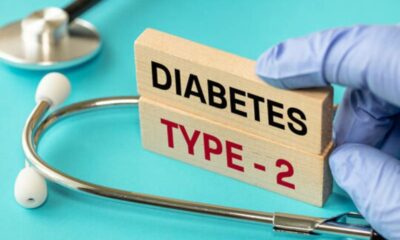Diabetes is a metabolic disease that affects more than 500 million persons globally. Peripheral insulin resistance is a hallmark of type-2 diabetes (T2D), which is the most prevalent kind.
This suggests that peripheral tissues, such muscle and fat cells, do not react to insulin well in T2D patients, which eventually causes problems with blood sugar regulation. The increasing loss of function of the pancreatic b-cells, which are in charge of making, storing, and releasing insulin, is another important aspect of type 2 diabetes.
With some patients adhering to a tightly restricted diet and others monitoring their blood glucose levels and using insulin as needed, type 2 diabetes is often managed. However, mishandling the illness can have potentially fatal results. Furthermore, a permanent treatment for T2D is still difficult.
In light of this, a study team headed by Professor Zhiguang Su of Sichuan University in China recently made the decision to compile some of the most recent findings about Type 2 Diabetes through a comprehensive literature review. They discussed various treatment approaches as well as the factors behind b-cell failure in their review.
First, the researchers go over our existing knowledge of B-cell physiology in healthy settings. They examine the controlled processes and go into the finer points of insulin synthesis and secretion in these cells. It is important to note that the regulation of insulin secretion is not a simple process that can be achieved solely by monitoring blood glucose levels. Rather, it is akin to a sophisticated chemical orchestration that is impacted by a number of factors, including adenosine triphosphate (ATP), GABA neurotransmitters, and signaling between distinct types of pancreatic cells.
The essay next explores the most recent scientific findings in an effort to comprehend T2D etiology, the technical term for the onset and progression of the disease. As was previously noted, one of the characteristics of T2D is insulin resistance. It makes all of the body’s cells incapable of coordinating an insulin-lowering response and responding appropriately.
Remarkably, the data that is now available points to a cascading effect between long-term insulin resistance and b-cell failure. Prof. Su elaborates, saying that insulin resistance is brought on by hyperglycemia and fat, especially visceral adiposity, and that higher insulin levels are required to counteract the ineffectiveness of insulin. In order to maintain glucose homeostasis, pancreatic b-cells recognize this need and respond by adaptively increasing insulin production and secretion by compensatory mass expansion.”
Further, he continues, “Ultimately, with increasing time, the number of b-cells as well as their secretory function progressively decline, and glucose homeostasis is impaired, eventually causing diabetes.” A multitude of factors, including as oxidative stress, aging, genetics, inflammation, and even the conversion of b-cells into other cell types, contribute to the complex failure of b-cells.
The analysis concludes by examining various therapeutic approaches meant to restore and regenerate b-cells. As the review indicates, chemical signaling to promote the growth of one’s b-cells may be the best course of action. Researchers have had modest success inducing B-cell proliferation with small-molecule medications and chemicals produced by organs other than the pancreas. It is important to remember that these experiments were carried out on mice, and more research is needed to ascertain whether these techniques are effective when used on people.
When asked about these findings, Professor Su is upbeat: “With the increasing appreciation of the mechanisms involved in promoting human b-cell proliferation and the development of high-throughput screening tools, it is anticipated that more small molecules and drugs expanding functional b-cell mass will be identified.”
Partial or total pancreas transplants are an alternate strategy for treating T2D. Although transplanted tissues hold out hope for a solution for type 2 diabetes, they are confronted with the obstacle of immune system targeting. As a result, recipients must take immunosuppressants, which can cause a host of additional complications.
The production of b-cells from stem cells offers an alternative therapy option for T2D that is friendly to the immune system. Nonetheless, there will be a few significant issues that need to be resolved. For starters, it seems that not all B-cells are created equal, and that the right balance of subpopulations is necessary for B-cells to operate properly in the pancreas. Furthermore, B-cells produced from stem cells currently perform worse than normal B-cells.
To put it briefly, the review article provides an extensive overview of the latest developments in this field of study and should encourage scholars to conduct additional research. Hopefully, a treatment for this widespread illness will soon be available.
According to Prof. Su, “Although many challenges remain unanswered, we believe that b-cell regenerative therapies will represent a viable cure for diabetes in the not-too-distant future with the recognition of mechanisms responsible for b-cell development and mature endocrine cell plasticity, remarkable advances in improved protocols to generate b-cells from stem cells and single-cell studies.”

 Diabetology2 weeks ago
Diabetology2 weeks ago
 Diabetology2 weeks ago
Diabetology2 weeks ago
 Diabetology1 week ago
Diabetology1 week ago
 Diabetology3 days ago
Diabetology3 days ago













